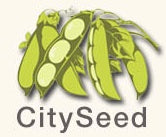If you have ever found yourself attracted by the beauty of an oriental rug, you will want to make your own pilgrimage to Kebabian’s, the oldest importer and dealer of oriental rugs in the United States. The browsing experience alone will pique your interest in this traditional art that embraces both form and function. At 73 Elm Street, just a few steps from Church, owner John Kebabian expertly shares about the fascinating process, drawing on his years of growing up in the family business, traveling overseas, working directly with weavers in their workshops. (“They let me try my hand at knotting on occasion, and it’s always good for a laugh!”)
“The store has always been in New Haven,” says Kebabian, who represents the fourth generation in this family business with its own interesting history. In 1882, his great-great-uncle, an Armenian immigrant from Turkey, came to attend Yale. First he had to devise a way to pay tuition, and thus set up shop. In a remarkable story of mutual support, the uncle operated the business for several years while a younger brother attended Yale. Then the younger brother ran the store, allowing him to get the
Kebabian’s Oriental Rugs
73 Elm Street (map)
New Haven, CT 06510
203-865-0567 | kebabians@snet.net
Tues – Sat 9am – 5pm
www.kebabian.com
education he’d come so far for. Meanwhile, their elder brother, Kebabian’s great great grandfather, remained in Turkey, handling the buying side. “It’s the key part,” Kebabian reveals. “You have to buy right.”
Kebabian carries on the family name with pride and dedication. “You want to deal with a reputable dealer who knows what they are doing,” he says. Numerous trips to Northern Afghanistan, Pakistan and India in search of high quality oriental rugs and the families who weave them, has built his own knowledge so as to ‘buy right’.
When discussing the families with whom he works, Kebabian’s praise and admiration is limitless. “Weaving is a lengthy and labor-intensive process that requires concentration and strength. What begins as a hand-drawn design on graph paper will eventually become a work of art.” Prices can range from $50 into the tens of thousands,
Sponsored by
and production of an oriental rug can take six months to a year or more.
I ask Kebabian how many rugs he stocks in his store, and he laughs, “Too many and not enough!” He adds, “Seriously, we have thousands on hand that are easily accessible.” And just in case you don’t find exactly what you’re looking for, he also executes custom requests. He can recreate antique rugs and translate a small rug into a larger one. Of this he says, “We have to get creative. Scale the design up. Find the right weaver, the right family, to recreate. Everyone knots differently. Uses different wools. Different dyes.”
The picture that starts to emerge is that Kebabian is on top of every facet, knowledgeable and attentive. Further reinforcing Kebabian’s commitment to quality, he emphasizes vegetable-dyed, rather than chemical-dyed, wool. While they do carry the latter, Kebabian tells me, “Our real forte is all-natural rugs.” As you might expect in a business this durable, there’s an abiding concern for the client who is buying one or more of his rugs. “It’s a big decision. We want people to be totally comfortable, totally at ease and happy with the product and the service. Everything we do.”
In his store you’ll encounter a number of patterns, some inspired by textiles, others by architecture. My personal favorites (and also the most generally popular, I’m told) are the flower-laden designs, blooming and blossoming beneath my feet or on the wall. Says Kebabian of this style, “The floral elements represent the garden, which is paradise. The rug is paradise brought into the home.”









